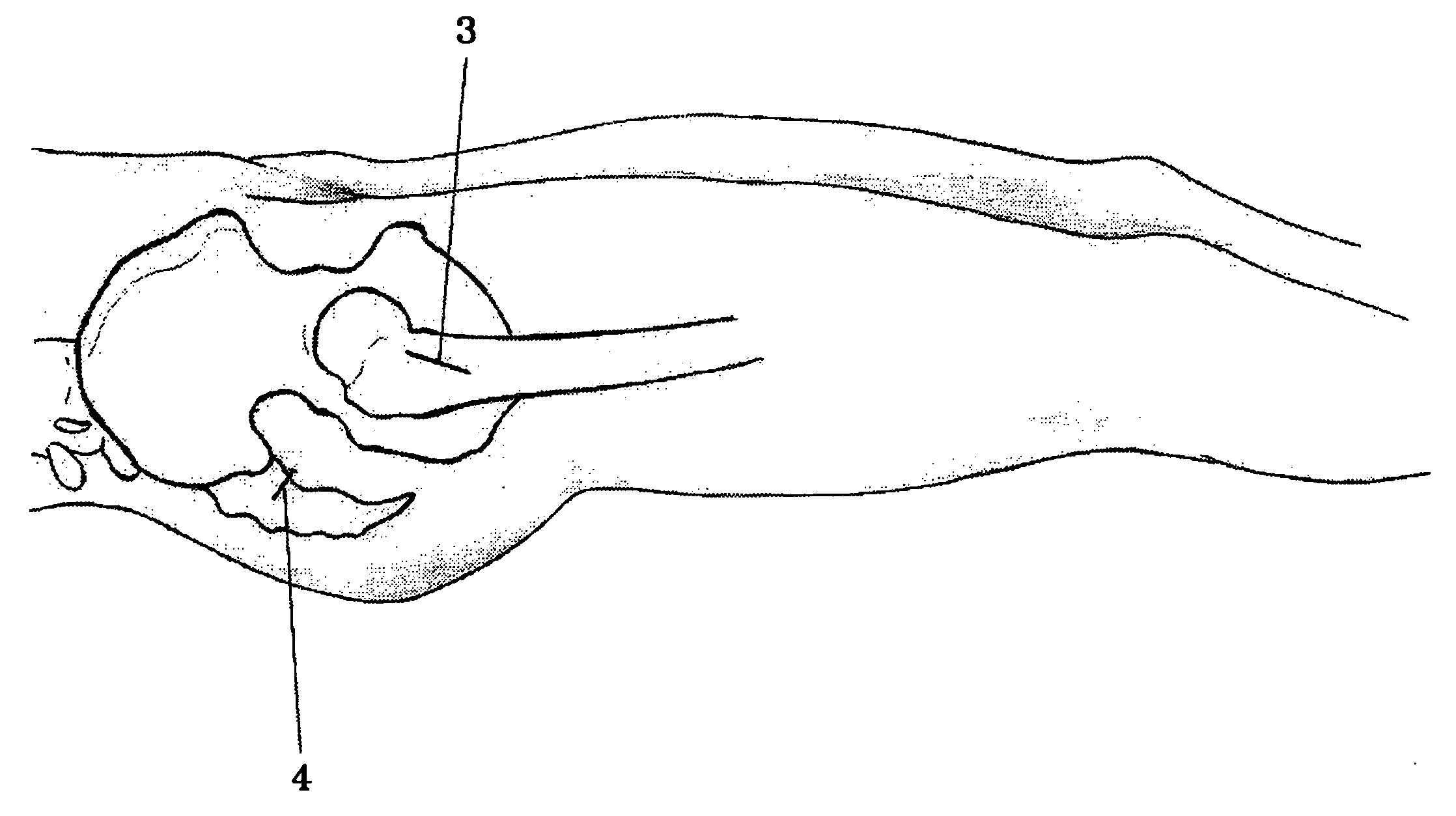Two-incision minimally invasive total hip arthroplasty
a hip arthroplasty and minimally invasive technology, applied in the field of surgical methods, can solve the problems of delayed rehabilitation time, reduced muscle power, and vulnerable injuries of gluteus medius and gluteus minimus, and achieve the effects of less injury, less injury, and less damage to the patien
- Summary
- Abstract
- Description
- Claims
- Application Information
AI Technical Summary
Benefits of technology
Problems solved by technology
Method used
Image
Examples
Embodiment Construction
[0017] A preferred embodiment of the present invention will now be described in detail with reference to the accompanying drawings. First, with the patient in a lateral decubitus position [FIG. 2] a skin incision (3) is made over the anterior side of the trochanteric area of the femur (ranging from 3 cm to 10 cm) (18). An intermuscular dissection (4) is made between the Gluteus muscle (Gluteus minimus and medius) (9) and Tensor fascia lata muscle (8). The anterior joint capsule is incised and the femoral neck (17) is exposed and osteotomized. The femoral head (16) and neck (17) are removed with a cork screw. The acetabulum (15) is reamed with a socket reamer and an acetabular socket (12) is inserted [FIG. 4].
[0018] A secondary skin incision (4) is made over the Gluteus maximus muscle (ranging 1 cm to 6 cm) (10). The muscle fibers of the Gluteus maximus (10) are spread and an intermuscular dissection between Gluteus medius and Piriformis is performed. The joint capsule is incised on...
PUM
 Login to View More
Login to View More Abstract
Description
Claims
Application Information
 Login to View More
Login to View More - R&D
- Intellectual Property
- Life Sciences
- Materials
- Tech Scout
- Unparalleled Data Quality
- Higher Quality Content
- 60% Fewer Hallucinations
Browse by: Latest US Patents, China's latest patents, Technical Efficacy Thesaurus, Application Domain, Technology Topic, Popular Technical Reports.
© 2025 PatSnap. All rights reserved.Legal|Privacy policy|Modern Slavery Act Transparency Statement|Sitemap|About US| Contact US: help@patsnap.com



